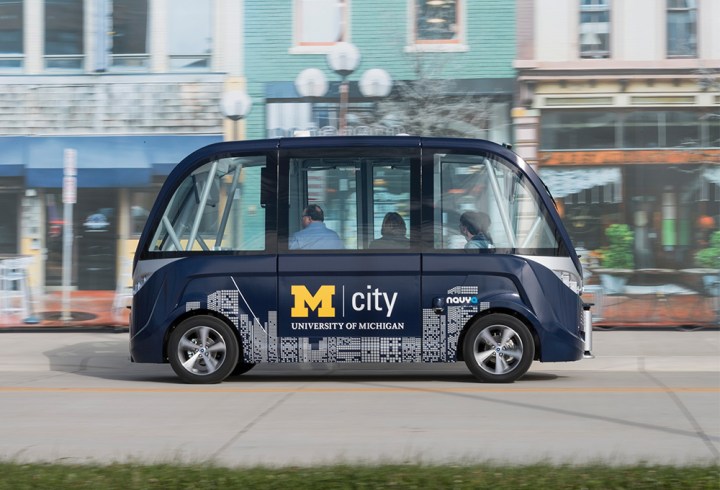
From this fall, the University of Michigan will roll out two fully automated, all-electric buses for shuttling students around its North Campus.
The 15-seat shuttle bus is built by French firm Navya, which has been steadily honing its autonomous technology following trials in Las Vegas and Switzerland, among other places.
Navya’s vehicle features lidar, which uses invisible laser beams to help make sense of the surrounding environment, GPS for positioning, as well as a number of on-board cameras and Wi-Fi communications to collect data generated during operation.
The vehicles are being deployed as part of a deal with Mcity, the university’s 32-acre testing facility where engineers from different companies can put their autonomous-vehicle technology through its paces.
Commenting on the new driverless shuttle service, Huei Peng, director of Mcity and a professor of mechanical engineering at the University of Michigan, said, “This first-ever automated shuttle service on campus is a critical research project that will help us understand the challenges and opportunities presented by this type of mobility service and how people interact with it,” adding, “The shuttles will augment [the university’s] busy campus bus service to provide another mobility option.”
The autonomous vehicles will serve a two-mile route between the Lurie Engineering Center and the North Campus Research Complex on Plymouth Road. They’ll pass by about every 10 minutes and will offer free rides to students and staff.
Mcity is hoping to gather lots of useful information about passengers’ response to riding in a driverless vehicle “as a way to gauge consumer acceptance of the technology,” and it’s also interested in the reactions of others on the road such as cyclists and pedestrians.
While the vast majority of driverless shuttle services involve small buses carrying a dozen or so passengers, we can’t help but be reminded of the much larger autonomous bus that China put on the road a couple of years back. We’re not sure how it’s doing, but we don’t expect to see the widespread use of autonomous buses that size anytime soon.


